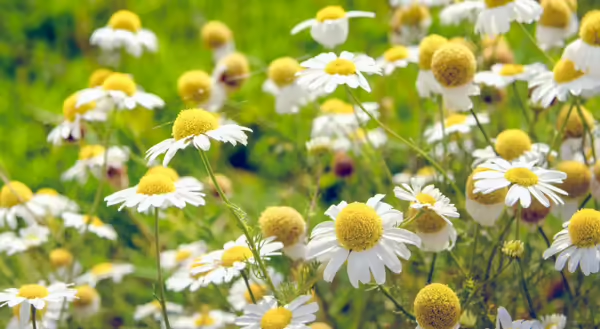
Earning a title like "Plant of the Year" is a true honor for any garden specimen. Chosen by garden and plant associations to highlight exceptional plants that offer both beauty and reliability, these plants carry significant respect in the gardening community. If you're looking to add new plants to your garden this summer, consider including these standout options.
German chamomile (Matricaria chamomilla), a culinary herb commonly found in tea mixes is the Herb of the Year from the International Herb Association. Chamomile, native to Europe and Asia, is grown as a cool-season herb or ornamental annual plant in many gardens in Illinois.
Small, daisy-like white flowers with yellow centers are scattered among delightfully fragrant foliage, reaching two feet tall. It reliably blooms from midsummer through fall, attracting a wide array of pollinating insects. The finely divided leaves give the plant a miniature fern-like appearance. German chamomile grows best in full to part sun and well-drained soils; the shallow root system may rot in wet soils. Besides some decline in hot temperatures, it is minimal maintenance as well, requiring little supplemental fertilization and few problems with pests.
German chamomile is self-seeding in the garden. To prevent seedlings from appearing next year, deadhead any spent flowers to stop the mature seeds from scattering below the plant. Its shorter growth habit makes this plant a perfect addition to the front border of a landscape, near a garden walkway, or tucked into small crevices in a rock garden. The fruity fragrance can also be enjoyed near a patio or sitting area. Besides beauty in the garden, chamomile has many other uses. The dried flowers can be used in teas, potpourris, dyes, and crafts. Flowers should be harvested at full blooms by cutting off just the flower head from the stem. Teas are made by steeping dried flowers.
Clustered mountainmint (Pycnanthemum muticum), the Perennial Plant Association’s Plant of the Year, is valued for its hardiness in the garden. This pollinator-friendly plant features tiny inconspicuous, light pink to white flowers surrounded by silver bracts, blooming from July to September. Native to the Eastern United States, it spreads through underground rhizomes, which can make it aggressive in some gardens. Growing two to three feet tall with long, branching stems that form a dense clump, its mint-scented foliage helps deter deer and rabbits from nibbling on the leaves. While it is not the “show stopper” of the garden, it offers unique color and texture when mixed with other popular pollinator plants such as liatris, bee balm, and purple coneflower.